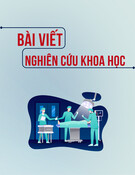
86
| Journal of Science and Technology in Medicine and Pharmacy | Vol 2, No 5 - 2023
Editor-in-Chief:
Dr. Nguyen Phuong Sinh
Received:
6/12/2023
Accepted:
21/12/2023
Published:
31/12/2023
Copyright: @ 2023
Belongs to the Journal of
Science and Technology in
Medicine and Pharmacy
Competing interests: The
authors have no competing
interests to declare.
Contact address: No. 284,
Luong Ngoc Quyen str., Thai
Nguyen city, Thai Nguyen
Province
Email:
tapchi@tnmc.edu.vn
SOME CLINICAL, ENDOSCOPIC FEATURES AND
ETIOLOGYS OF PEPTIC ULCER DISEASE IN
CHILDREN AT PHU THO OBSTETRIC AND
PEDIATRIC HOSPITAL
Tran Thi Thuy Linh1*, Nguyen Van Son2 , Nguyen Thi Xuan
Huong2, Nguyen Thi Phuong2
1 Phu Tho Obstetrics and Children's Hospital
2 Thai Nguyen University of Medicine and Pharmacy
ABSTRACT
Background: Patients with duodenal inflammation and ulcers, it
may be due to one or a combination of many related causes or
factors that together aggravate the disease condition with
different clinical and paraclinical manifestations. What are the
clinical and paraclinical manifestations of children with duodenal
ulcers treated at Phu Tho Provincial Obstetrics and Children's
Hospital? What is the cause of duodenal ulcers in these patients?
Objectives: Description some clinical, endoscopic features and
etiology of peptic ulcer disease in children. Methods: A cross-
sectional descriptive study on 84 patients diagnosed with peptic
ulcer disease (PUD) at Phu Tho Obstetric and Pediatric Hospital
from October 2022 to July 2023. Results: Mean age was 9.08 ±
3.5 years (y). Male/female ratio was 1.33/1. The proportion of
children living in urban areas was 48.8%. The most common
symptoms are abdominal pain (98.8%) and vomiting (97.6%); the
rate of vomiting blood was 2.4% and melena was 6.0%.
Endoscopic results: gastritis 100%, ulcers 33.3%, gastrointestinal
bleeding 15.5%, Forrest IIa score accounted for the most at
11.9%. In cases of ulcers, two or more ulcers was 23.8% and
deep ulcers was 16.6%. 59.4% of patients had no determined
cause; the rate of Helicobacter pylori (H. pylori) infection was
31%, 31%, H. pylori+NSAID was 6%, using only non steroidal
anti inflammatory drugs (NSAIDS) was 3.6%. Conclusion:
Children with peptic ulcer disease, abdominal pain and nausea,
vomiting were the most common clinical symptoms; endoscopic
findings had high value in identifying lesions and H. pylori
infection was the common cause.
Keywords: Peptic ulcer disease; H. pylori; NSAIDs; Children.

Journal of Science and Technology in Medicine and Pharmacy | Vol 2, No 5 - 2023 |
87
INTRODUCTION
Peptic ulcer disease is a quite common disorder in our country and
around the world that affect 0.1–1.5% per 1000 people annually,
according to a meta analysis of data in United States, and they are
increasingly trending younger individuals1. This is a chronic
condition with numerous symptoms that not only significantly
impact one’s quality of life and the development of children but
can also lead to various dangerous complications such as
gastrointestinal bleeding, stomach perforation, gastric cancer, etc.
The most common symptom of peptic ulcer discease is abdominal
pain, accounting for over 95% of cases, other common symptoms
include nausea, vomiting, and epigastric burning sensation
geographical region2-3.
Helicobacter pylori plays a crucial role in the pathogenesis of
peptic ulcer disease, being the leading causative agent and a factor
in disease recurrence. The prevalence of H. Pylori infection in
pediatric patients with peptic ulcer in the study conducted by
Nguyen Thi My Le was 43.8%, and by Niv Y. was 36 – 54%
depending on the geographical region1-2. Additionally, other
common disease etiology include drug side effects, include
NSAIDs, steroids, and anti-cancer drugs3... These factors can act
singly or in combination, exacerbating the disease condition. So,
what distinguishes the characteristics of pediatric patients with
peptic ulcer disease in Phu Tho province, and what are the
common disease etiology? Therefore, we conducted this study
with the aim: “Describing the clinical characteristics, endoscopic
findings, and identifying the etiology of peptic ulcer disease in
pediatric patients treaded at Phu Tho Obsteric and Pediatric
Hospital in 2022 – 2023”.
METHODS
Study subjects, time, and place: 84 pediatric patients were
diagnosed with PUD and were treated at Phu Tho Obsteric and
Pediatric Hospital from October 2022 to July 2023.
Inclusion criteria:
Clinical: Patients exhibit symptoms of PUDwhich indications for
gastrointestinal endoscopy include: recurrent abdominal pain,
vomiting, nausea, bloating, difficalty in swallowing, epigastric

88
| Journal of Science and Technology in Medicine and Pharmacy | Vol 2, No 5 - 2023
burning sensation or gastrointestinal bleeding, anemia of unkown
cause.
Subclinical: Diagnosed through endoscopy that reveals signs of
PUD + Both the patient and their family consent to participate in
the research.
Exclusion criteria: The patient has a history of surgery on the
esophagus and gastroduodenuma; has contraindications for
esophagogatroduodenoscopy; is currently undergoing treatment
for cardiovascular, respiratory, liver, kidney diseases, malignant
conditions, or coagulation disorders, and has a history of
antibiotic or bismuth use within the last 4 weeks or PPI within the
last 2 weeks.
Methods
Study design: Cross-sectional descriptive study.
Research indicators:
Clinical characteristics: Age, gender, place of residence, family
history of H. pylori infection, clinical symptoms upon admission.
Gastroduodenoscopic findings: Type of lession (inflammation,
ulceration, bleeding), classification of bleeding according to the
Forrest criteria with 6 levels (Ia, Ib, IIa, IIb, IIc, III), number of
lessions, degree of ulceration: superficial ulcers – mucosal layer,
deep ulcers – submucosal layers.
Etiology of peptic ulcer disease: H. pyroli infection confirmed
through the Clo test or C13 breath test, history of using anti-
inflammatory (NSAIDs, corticosteroids).
Research indexes:
- Percentage of reason for hospitalization of children.
- Rate of clinical symtom in children.
- Rate of characteristics of gastric and duodenal lesions on
endoscopy.
- Rate of endoscopy results of the stomach and duodenum: assess
the type of damage, number of lesions, and location of damage.
Data collection methods: Data collection was conducted using the
research patient record template and the medical records from Phu
Tho Obsteric and Pediatric Hospital. Clinical indicators were
directly obtained through interviews and examinations of the
pediatric patients, as well as from their parents or guardians

Journal of Science and Technology in Medicine and Pharmacy | Vol 2, No 5 - 2023 |
89
following the research patient record template. Endoscopic
findings were collected based on the medical records of the
pediatric patients.
Data analysis: Using SPSS 22.0 software. Calculating the
frequency and percentage (for quanlitative variables), and
computed the mean and standard deviation (for quantitative
variables). Compraring two proportions using the Chi-square test
and compared two means using the test t-student. Differences
were considered significant with p – value < 0.05.
Research ethics:
The research was approved by the Ethics Committee in
Biomedical Research of Thai Nguyen University of Medicine and
Pharmacy and received consent from the Director of Phu Tho
Obsteric and Pediatric Hospital. Parents or legal guardians of the
children provided informed voluntary consent by signing an
informed consent form to participate in the research. Patient
information was kept confidential, and patients had the right to
withdraw from the study at any time.
RESULTS
Table 1. The common characteristics of pediatric patients in research
Characteristics
n
%
Age
≤ 5 y
11
13.1
6 – 9 y
37
44.0
≥ 10 y
36
42.9
Mean
9.08 ± 3.5
Gender
Male
48
57.1
Female
36
42.9
Family members have H. pylori infection
4
4.8
Place of residence
Urban area
41
48.8
Rural area
43
51.2

90
| Journal of Science and Technology in Medicine and Pharmacy | Vol 2, No 5 - 2023
Geographic
Distribution
Viet Tri city
36
42.9
Phu Tho township
4
4.8
Phu Ninh
5
6.0
Lam Thao
9
10.7
Thanh Ba
5
6.0
Thanh Son
4
4.8
Yen Lap
2
2.4
Cam Khe
2
2.4
Other districts
5
6.0
Neighboring provinces
12
14.3
The avergage age of the pediatric patients in the study was 9.08 ±
3.5 y, with the highest proportion of children aged 6 – 9 years old
was 44%. The prevalance in urban and rural areas was quite
similar. The highest rate was in Viet Tri City (42.9%).
Table 2. Clinical characteristics of pediatric patients admitted
Clinical symptoms
n
%
Abdominal pain
83
98.8
Vomiting, nausea
82
97.6
Epigastric buring sensation
38
45.2
Bloating, indigestion
10
11.9
Distention
7
8.3
Anemia
7
8.3
Melena
5
6.0
Hematochezia
2
2.4
The most common symptoms were abdominal pain (98.8%) and
vomiting (97.6%). Gastrointestinal bleeding: hematochezia (2.4%)
and melena (6.0%).

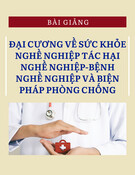



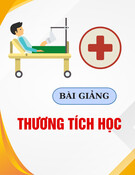





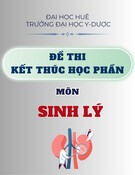
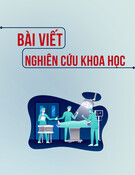
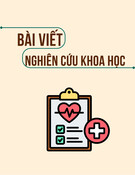
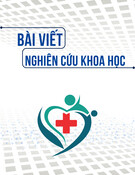

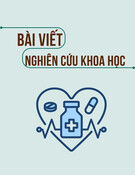

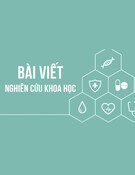
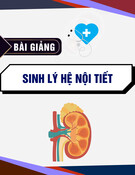


![Bài giảng Cập nhật vấn đề hồi sức bệnh tay chân miệng nặng [mới nhất]](https://cdn.tailieu.vn/images/document/thumbnail/2025/20250920/hmn03091998@gmail.com/135x160/23301758514697.jpg)


